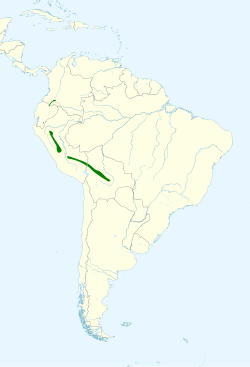| Yellow-lored tanager | |
|---|---|
| Scientific classification | |
| Kingdom: | Animalia |
| Phylum: | Chordata |
| Class: | Aves |
| Order: | Passeriformes |
| Family: | Cardinalidae |
| Genus: | Chlorothraupis |
| Species: | C. frenata |
| Binomial name | |
| Chlorothraupis frenata Berlepsch, 1907 | |
 | |
| Approximate range | |
The yellow-lored tanager (Chlorothraupis frenata), also known as the olive tanager, is a species of bird in the cardinal family Cardinalidae that is found in South America along the eastern foothills of the Andes from southern Colombia to western Bolivia. It was formerly considered to be conspecific with Carmiol's tanager of Central America.
